
The average number of products carried by a typical supermarket has more than quadrupled since 1980, from 15,000 to over 60,000 before 2010.
Making the best food choices for yourself and your family is very important and will help you maintain good health and control your blood sugar levels, especially if you are one of 26 million people in the United States or 346 million people worldwide that have type-1 or type-2 diabetes.
Below is a short list of the best and worst food choices for people living with diabetes You can find either in the supermarket and prepare in your own kitchen when you are preparing food or want something to eat.

The categories for the food choices listed by the American Diabetes Association’s diabetes food pyramid and new plate icon (replaced the pyramid in June 2011) do not fully explain and evaluate the body’s effects through processed foods and fail to help people choose between good quality food options like meats and healthy fats.
I found that the Mediterranean Food Pyramid, Dr. Joel Fuhrman’s Food Pyramid, and tips from Diabetic Living.com however, were healthier and better tools to use for people wishing to control their blood sugar better and prevent them from becoming someone living with diabetes as well.
The following compiled list of what I felt is the best foods for people with blood sugar management challengers to consume include six groups.
The older and typical version of most food pyramids started with enriched bread, grains, and other starches at the base, but the modified list taken mostly from the Mediterranean Food Pyramid and Dr. Joel Fuhrman’s healthy eating pyramid starts with being physically active, spending time with friends and family and then rises toward eating mostly raw and cooked dark green leafy vegetables, seasonal vegetables, grains, fruits, beans, nuts, legumes, seeds, herbs, and spices.
Your goal for shopping and preparing meals is to choose more food from the base of the pyramid and less as you move toward the top, and as many foods from the best food list as possible.
What follows are the best food choices that can be made from each group. In addition, you'll find tips for making the best beverage choices. In general, it will be easier to manage your diabetes if you choose most of your foods from the best lists.
Considering a food’s glycemic index and its glycemic load is very important and valuable in keeping food glucose and insulin levels in healthy and manageable ranges for people living with diabetes.
The glycemic index is a numerical representation of how quickly 50 grams of the food’s carbohydrate content will raise blood sugar levels.
Many factors contribute to the glycemic index, including its fat and fiber content, and how much it has been processed. It does not indicate the level of carbohydrates contained in foods.
The glycemic load is calculated by taking the amount of carbohydrate in a serving of food multiplied by that food’s glycemic index.
Try assessing the overall glycemic load of a diet, rather than focusing on any one specific food. An increased risk for cardiovascular disease begins at a daily glycemic load of 161.
This includes a positive mindset diet, supplements, and exercise.
Vegetables contain carbohydrates, vitamins, minerals, plant proteins and lots of fiber.
They usually contain fewer carbs than fruits. Many vegetables are naturally low in fat and sodium (unless they are canned).
Starchy vegetables, such as potatoes and corn, are not included in this category. They are considered part of the bread, grains, and other starches group. Use this list to guide your shopping and cooking choices. 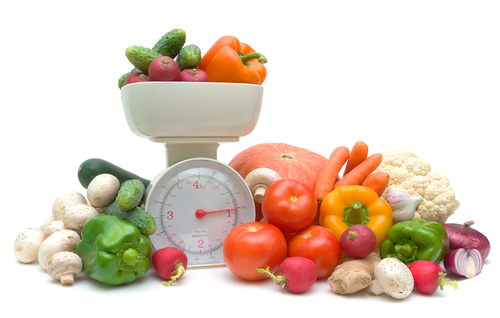
Fruits contain carbohydrates, vitamins, minerals, and fiber.
They are naturally low in fat—except for avocados—which contain healthy omega fats and sodium.
Fruits often contain more carbohydrates than those found in vegetables but may have more antioxidants and vitamin C in boosting the immune system. 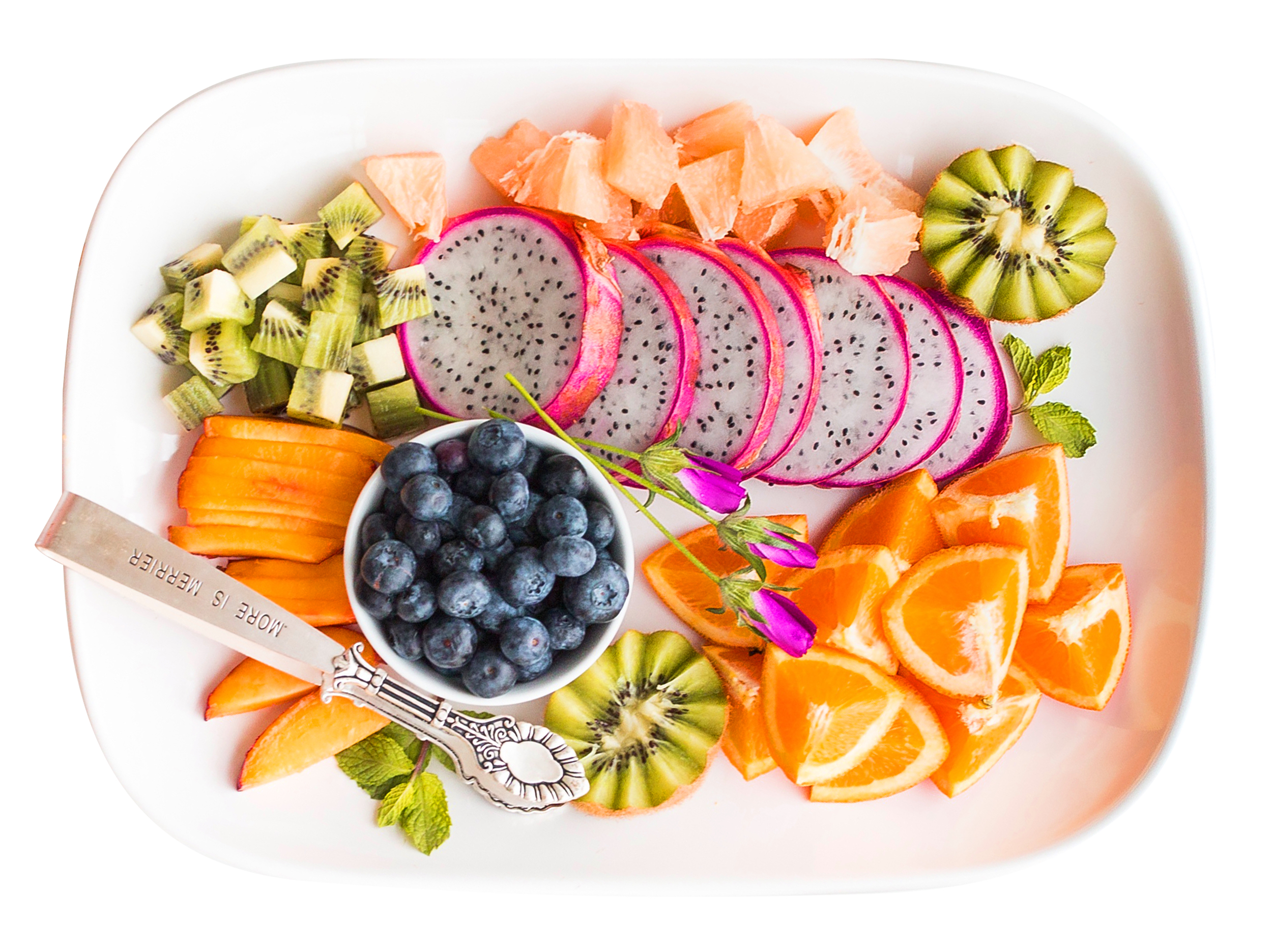
Good quality meats are high in protein and may include beef, chicken, fish, pork, turkey, and seafood.
This group also includes beans, cheese, eggs, nuts, and natural tofu. Selecting non-meat sources of protein (legumes and protein through natural soy or plants) can help lower the amount of fat you eat. Use this list to guide your protein choices.
This group includes milk and foods made from milk, such as yogurt and sour cream.
Milk contains a lot of protein and minerals, including calcium. Use this list to guide your selection of milk products.
Fats, oils, and sweets—and foods containing them—often provide lots of calories and little nutrition.
Many "snack foods" are filled with trans-fats or oils and sugar.
Eating too much of these kinds of foods can lead to weight gain, making it harder to keep diabetes under control. This does not mean you must avoid fats, oils, and sweets altogether. Select healthy fats (omega 3s) and eating them wisely is key. The list will include some suggestions.
Many beverages are not found on the food pyramid.
Some beverages contain lots of carbohydrates and sugars while providing little or no nutrition. This makes it easy for beverages to contribute to weight gain and spike blood sugar.
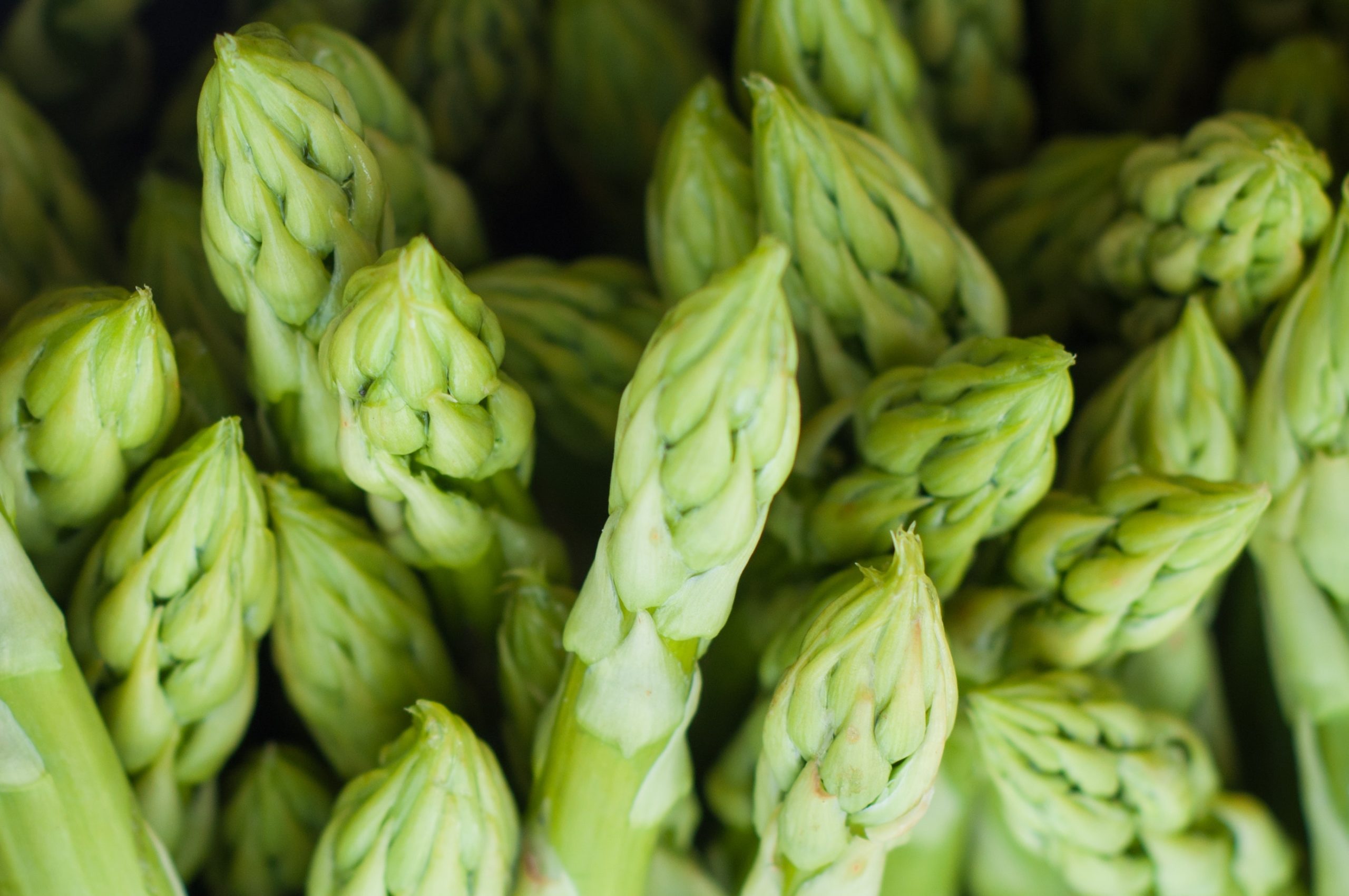
If you love asparagus, you'll really love that this non-starchy vegetable with only 5 grams of carb per serving and nearly 2 grams of dietary fiber. It is also high in the B vitamin folate, vitamin C, and a health-promoting antioxidant called glutathione which may help boost the immune system and promote lung health by protecting against viruses.
The cardiovascular benefits of folate and other B vitamins have been studied in relation to homocysteine, an amino acid in the blood that has been linked to a higher risk of coronary heart disease. The American Heart Association recommends including foods containing folate and other B vitamins in your diet to help lower homocysteine levels.

Enjoy the benefits of blueberries on their own or in a variety of foods, including smoothies and pancakes.
Blueberries provide dietary fiber, vitamin C, and flavonoids, a type of phytonutrient that offers antioxidant protection, such as boosting your immune system and fighting inflammation.
Flavonoids may also help decrease the LDL (bad cholesterol)-oxidation process that can lead to arterial plaque, according to the Cleveland Clinic.
Blueberries get their dark blue color from anthocyanins, another disease-fighting antioxidant that may benefit heart health. Blueberries have also been studied for their potential to protect and improve vision.
One serving is 3/4 cup and has 15 grams of carbs. You can enjoy fresh, in-season blueberries May through October or buy the frozen varieties year-round.
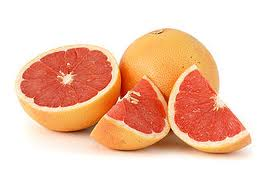
Sweet, juicy, and delicious, the ruby red grapefruit packs more antioxidant power and possibly more heart benefits than the white grapefruit. In a preliminary 30-day test of 57 people with heart disease, those eating one red grapefruit daily decreased their LDL (bad) cholesterol by 20 percent and decreased triglycerides by 17 percent.
In contrast, those eating a white grapefruit reduced LDL by 10 percent with no significant change in triglycerides, compared with a group of people who didn't eat the fruit.
Include the vitamin C-rich grapefruit as a juice, in salads, or by itself. The only way the body can get vitamin C is through food, such as citrus fruits (picked ripe off the tree), or supplements.
Please note* Grapefruit interacts with certain drugs, including statins and antiarrhythmic medications, so check with your health-care professional.
One serving of a large grapefruit is one half of the grapefruit or 3/4 cup of grapefruit sections

You can't go wrong with beans. Beans are high in fiber and protein and are a good source of vitamins and minerals, such as folate, iron, magnesium, and potassium, which is essential for the water balance between the cells and body fluids, such as electrolyte balance.
Try eating a variety of foods to get the necessary soluble and insoluble fiber needed daily--about 25 to 30 grams a day, which is twice the amount the average American adult normally consumes. One serving of navy beans is 1/2 cup and has 5.8 grams of fiber per serving.
There are so many delicious varieties of beans to choose from, such as black, kidney, garbanzo, white, lima, lentil, and pinto, finding ways to incorporate beans in your diet is a breeze.
Soak and cook dry beans or use canned beans.
Try substituting beans as your main protein source for lunch or dinner a couple times a week.
Protein is an important part of your daily nutrition, which helps the body repair and generates cell, build muscle and bones and keeps you satiated for longer periods of time.
The American Diabetes Association counts one serving of beans, or 1/2 cup, as one starch and one lean meat

One of my favorite superfoods is the powerful broccoli.
This amazing vegetable has more vitamin C per 100 grams than an orange and is considered a great source of fiber and the antioxidant beta-carotene, which the body uses to make vitamin A. This dark green vegetable's vitamin A power promotes healthy vision, teeth, bones, and skin.
Vitamin C is essential for healing wounds and is a disease-fighting antioxidant, according to the National Institutes of Health's U.S. Library of Medicine.
One serving of broccoli is 1 cup raw or 1/2 cup cooked. Pick up fresh broccoli in the produce section or your local farmer's market.

Cooked or raw, carrots are a healthy addition to any meal plan. Have them for a snack with 2 tablespoons of light ranch dressing or include them in your main course or as a side dish.
Though carrots are high on the glycemic index, they provide an abundance of vitamin A from the antioxidant beta-carotene. This powerful phytonutrient may help prevent cancer and heart disease. Carotenoids found in yellow and orange produce may also help reduce insulin resistance.
Carrots are another source of fiber and heart-healthy flavonoids, which can also be enjoyed juiced with other healthful fruits and vegetables such as apples, beets, or the power spice ginger.
One serving of carrots is 1 cup raw or 1/2 cup cooked

Fresh, wild fish is a great addition to your meal plan, especially omega-3-rich fatty fish, such as salmon, trout, tuna, sardines, mackerel, and herring. Omega-3s, a type of polyunsaturated fat, which is healthful, can help lower triglycerides. Omega-3s from wild fish can also help reduce inflammation, lower blood pressure, and reduce the risk of blood clots.
Although fish is good for you and is considered a lean-meat substitute for its high protein, concerns have been raised about harmful mercury levels and other toxins found in some fish.
According to the American Heart Association, swordfish, shark, golden bass, golden snapper, and king mackerel have the highest mercury levels, measuring up to 0.99 parts per million for a 3-ounce serving. Fish lower in mercury for a 3-ounce serving include wild salmon (.01 ppm), herring (.04 ppm), catfish (.05 ppm), and canned light tuna (.12 ppm).
Try preparing fish on the grill, baked, broiled, or steamed. One serving of fish is 1 ounce
Flaxseed is the new "it" ssuperfood noted for its alpha-linolenic acid (ALA), a fatty acid that can be converted into omega-3 fatty acids, which offer similar benefits as the omega-3 fatty acids EPA and DHA found in fish.
ALA omega-3s are known for helping to lower triglycerides, reduce inflammation, and decrease the risk of heart disease.
Flaxseed has emerged as a must-eat power food for overall health. High in both soluble and insoluble fiber, flaxseed is also a good source of lignans, a phytoestrogen that is considered another type of antioxidant.
Flaxseeds are available whole, ground (milled), or as flaxseed oil. To reap the most nutritional reward from the nutty-flavored flaxseed, use ground flaxseed on salads and cereal and mixed into breads, smoothies, and dressings.
Not just for Thanksgiving dinner, cranberries are a power fruit packed with the disease-fighting antioxidant vitamin C that can be eaten year-round. Although best known for helping to prevent urinary tract infections, cranberries and their abundant phytonutrients, including anthocyanins, may also help protect against cancer and cardiovascular disease.
Anthocyanins lend vibrant color and antioxidant power to red, blue, and purple foods, such as cranberries.
Add cranberries to smoothies, salads, or delicious chutneys. Look for cranberries in pre-packaged bags, in the freezer section, jellied, dried, or juiced. Be sure to look for reduced sugar or sugar-free cranberry products. One serving of dried cranberries is 2 tablespoons.

The soluble and insoluble fiber in apples can benefit people with diabetes. According to a 2003 study published in the Archives of Internal Medicine, a diet high in fiber can reduce the risk of cardiovascular disease-a leading diabetes complication, which is often caused by high cholesterol, lack of exercise, and obesity.
The good news is one medium-sized apple packs 3 grams of fiber--12 percent of the recommended 25 grams per day.
Plus, the soluble fiber in an apple may help slow digestion. According to the Cleveland Clinic, some research has indicated this slowing-down process may help regulate cholesterol and stabilize blood glucose.
Eating (organic-best) apples, especially with the skin, not only increases your fiber intake but provides vitamin C and flavonoids, a disease-fighting antioxidant.

Melons come in many varieties including: watermelon, cantaloupe, muskmelon, honeydew, casaba, crenshaw, Persian, and pepino.
While all provide good nutrients, watermelon is highest in vitamins C and B6 and is a good source of the antioxidant lycopene, which may help protect against cancer.
Lycopene is commonly associated with tomatoes and tomato juice, but watermelon is another optimal source. Watermelon is also high in beta-carotene, which the body uses to make vitamin A.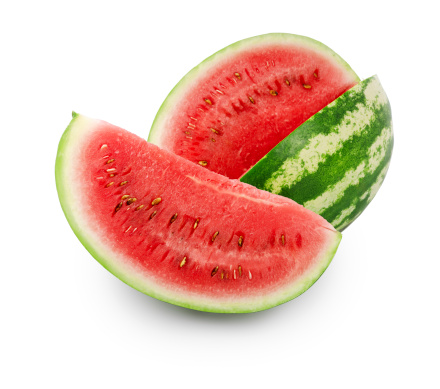
Honeydew is also high in vitamin C and a good source of potassium, which can help improve or maintain blood pressure, according to the Harvard Medical School Family Health Guide Online.
Check with a health-care professional before increasing potassium intake if you have kidney complications or kidney disease.
Cantaloupe is also high in potassium and the antioxidant beta-carotene, and is a good source of fiber, vitamin C, and folate.
The American Heart Association recommends getting enough folate and other B vitamins in your diet to help lower homocysteine levels, which may help decrease the risk of heart disease.
✓ Watermelon should be firm and without bruising or dents. Store whole watermelons at room temperature for up to 10 days. One serving is 1 slice or 1-1/4 cups cubed.
✓ Honeydew should feel heavy, have a slight scent, and not have bruising or softness. One serving is 1 slice or 1 cup cubed.
✓ Cantaloupe should have well-defined netting, feel heavy, and have a strong smell. Store cantaloupes away from other foods to avoid crossing flavors. One serving is 1/3 of a melon or 1 cup cubed.

Nuts are a good source of protein, fiber, vitamin E, and flavonoids and are power-packed with monounsaturated fat. Plant sterols known to lower cholesterol also naturally occur in nuts.
According to the Mayo Clinic, about 80 percent of a nut is made of up fat. Although nuts contain healthy fats, they are also high in calories.
Walnuts, almonds, macadamia nuts, pecans, and hazelnuts are just some of the nuts that can help lower LDL (bad) cholesterol, making them heart-healthy choices.
Eat nuts in moderation and avoid salted, sugared, or chocolate-covered options that increase calories and decrease nuts' natural health benefits.
One serving of almonds, cashews, or mixed nuts is 6 nuts. One serving of pecans is 4 halves, a serving of hazelnuts is 5 nuts, and a serving of pistachios is 16 nuts, per the American Diabetes Association.
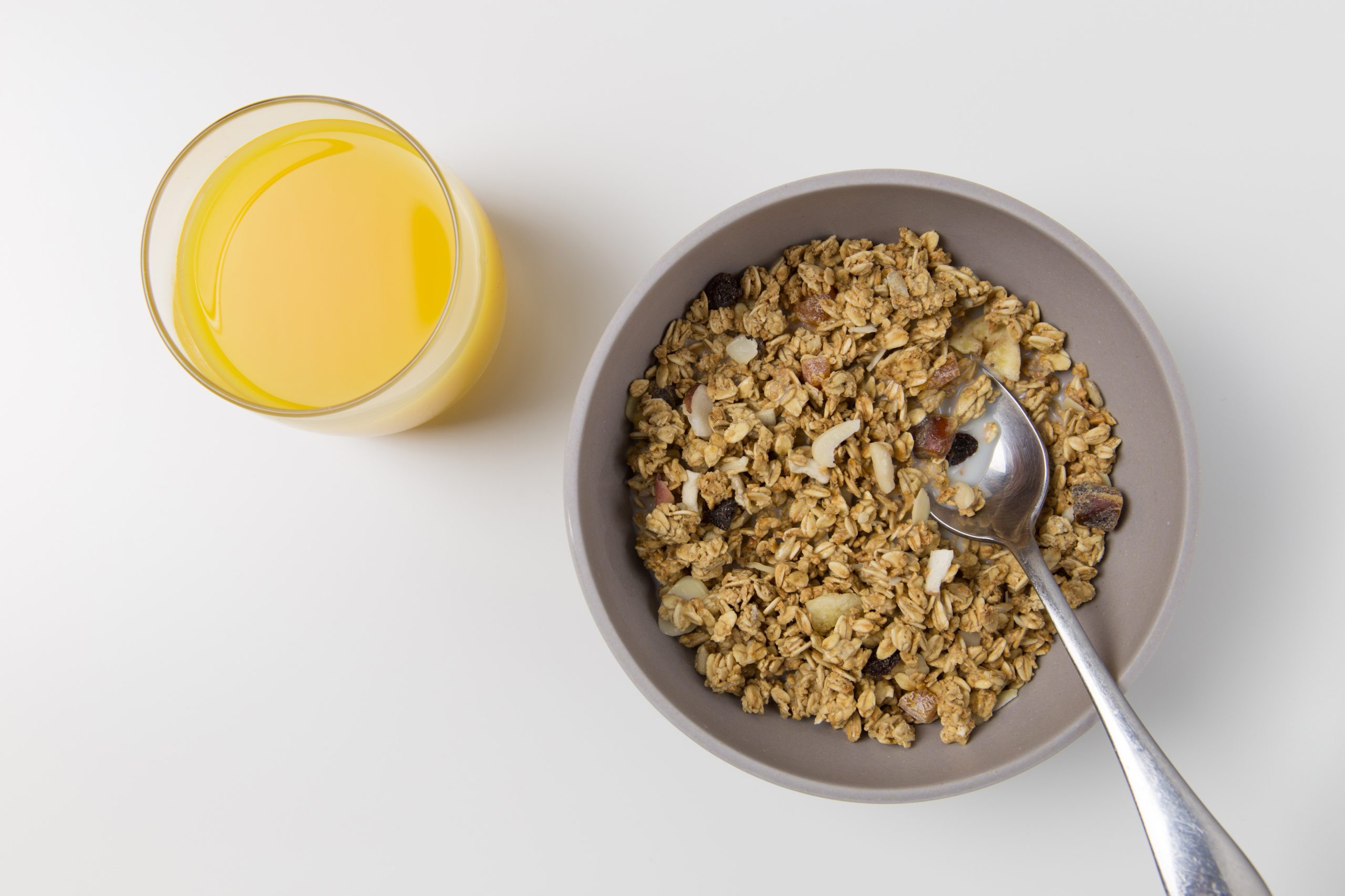
Fueling up with a bowl of oatmeal in the morning, will keep you fuller longer because of the fiber content. The soluble fiber in oats also can help lower cholesterol, improve blood pressure, and stabilize blood glucose by slowing digestion. Oats are also a source of antioxidants.
Flavor oatmeal with cinnamon or artificial sweeteners to keep total calories low. Oats also provide vitamin E, B vitamins, magnesium, and potassium, which may help lower blood pressure.
There are several types of oatmeal to choose from. Steel-cut oatmeal has a dense, thick texture and can take up to 45 minutes to cook, while old-fashioned (or rolled) oats are thinner and take less time to cook.
The less processed the oat, such as steel-cut oatmeal, the lower it is on the glycemic index, which may help control blood glucose.
Quick cooking oatmeal and instant oatmeal are also available, but try to pick the steel-cut oatmeal whenever possible. Be sure to check the labels for added salt and sugar. One serving of oatmeal is 1/2 cup.

Red onions not only add great color to salads, sandwiches, and stews, they also score highest in antioxidant power, with yellow onions not far behind and white a distant third.
Onions are also a good source of fiber, potassium, and folate-all good for heart health. Onions' high flavonoid content also puts them on the map for cancer and cardiovascular research and other chronic diseases, such as asthma. According to a 2002 study in The American Journal of Clinical Nutrition, having a high dietary intake of the flavonoid quercetin found in onions may lower the risk of these chronic illnesses.
One serving of this power vegetable is 1 cup raw or 1/2 cup cooked. If you love onions but not the scent that lingers on your breath, try chewing on a few sprigs of parsley or a mint leaf.

Raspberries are packed with fiber (partly due to their tiny, edible seeds) and are high in vitamin C, a powerful antioxidant that the body can only get through food.
Vitamin C is beneficial for bone and skin health as well as cancer and heart disease prevention.
These delicate berries are also rich in anthocyanins, which give red raspberries their color and more antioxidant power. Try selecting organic whenever possible!
There are red, black, and purple raspberries, which you can plant in your garden or buy at your local market or farmer's market.
Store fresh raspberries in your refrigerator up to seven days or use ripe berries to make jams and jellies or freeze for later. In the winter, check your grocery store for frozen, unsweetened raspberries.
One serving of raspberries is 1 cup.

Spinach is a popular dark green leafy vegetable loaded with vitamins and minerals, including vitamins B2 and B6, folate, copper, magnesium, potassium, zinc, and fiber.
Studies of spinach have found it has the potential to decrease the risk of cancer, cataracts, and heart disease.
Spinach is high in beta-carotene, an antioxidant that the body uses to make vitamin A. Beta-carotene helps protect the body's cells from free radicals, which contribute to chronic illness and aging. Plus, just 1/2 cup of cooked frozen spinach has 145 mg of calcium and 3.5 grams of fiber.
Although many studies have concluded that more research is needed to declare that cartenoid-rich vegetables, such as spinach, prevent or decrease disease, spinach is still a great vegetable to include in any meal plan.
You can find fresh or frozen spinach at your local market. Make sure you wash the spinach really well (even the triple washed ready-in-the bag ones to decrease your risk of food poisoning).
One serving of spinach is 1/2 cup cooked or 1 cup raw, which is great for salads or sautéed in an egg white omelet.

Often used as a substitute for animal products, natural soy is an excellent power food to incorporate in your diet, even if you are not a vegetarian.
Soy can be eaten in whole bean form (best), such as baby green soybeans called edamame, which is the highest in protein. Other natural soy products include natural soy milk or cheese (Eden Foods produces best), tofu, miso, tempeh, soy nuts, mushroom paste or vegetarian meatless products.
Natural soy is also a source of niacin, folate, zinc, potassium, iron, and alpha-linolenic acid (ALA), a fatty acid that can be converted into omega-3 fatty acids, known to help lower cholesterol.
is a B vitamin that aids in converting food into energy.
may help lower homocysteine levels linked to heart disease.
found naturally in foods or supplemented in foods or vitamins, may be lower in people with diabetes and may help improve immune function and wound healing, according to the National Institutes of Health Office of Dietary Supplements.
may help lower blood pressure and is essential for the water balance between the cells and body fluids, such as electrolyte balance, according to the American Heart Association.
oxygenates the blood and body and helps keep a healthy immune system.

Tea contains antioxidant-rich flavonoids, called catechins, which have been studied for their effectiveness in preventing chronic illnesses such as cancer and heart disease.
According to a study published in the Lancet, 2002, drinking tea can improve insulin activity up to 15 times, and it can be black, green or oolong. Herbal teas do not have any effect.
The active compounds do not last long in the body, so you would have to drink a cup or more of tea every few hours to maintain the benefit.
The catch is that you should drink it without milk (even soy milk), because milk seems to interact with the necessary chemicals and render them unavailable to your body.
There are various types of teas from all over the world, and many are sold ground in tea bags or as loose-leaf varieties (best).
White tea is the highest in antioxidants, with green coming in second, followed by oolong tea, then black tea.
This is because of each tea's degree of oxidation--the less it is oxidized, the higher the antioxidants and the lower the caffeine.
Tea can be enjoyed either hot or cold. If you prefer decaf, steep regular tea for 30 seconds, then pour it out.
Steep the tea leaves or tea bag again for 3 to 5 minutes, then drink. This natural, chemical-free decaffeinating process removes 80 percent of the caffeine, which is released in the first 30 seconds.

The tomato is an excellent source of vitamin C and potassium and is rich in lycopene, a powerful antioxidant that is easier for your body to absorb from cooked and processed tomatoes, such as tomato juice, than from fresh, whole tomatoes. Adding a little bit of oil while sautéing or cooking tomatoes can help aid in lycopene absorption.
Studies suggest lycopene-rich tomato products may help protect against certain types of cancer, including prostate cancer, and may offer cardiovascular and anti-inflammatory protection.
Check the Nutrition Facts food labels on packaged and canned tomato products to find those with the least sodium and sugar. Also, make sure you choose tomato sauce. The American Diabetes Association points out that tomato sauce is different than pasta or spaghetti sauces, which are categorized under starchy vegetables.

Yogurt is a sweet treat that is creamy, delicious, and good for you.
An excellent source of calcium, which helps promote the health of bones and teeth as well as muscle and blood vessel function, yogurt is also a good source of energy-boosting vitamin B2 (riboflavin) and protein.
It also provides zinc, which can be deficient in some people with diabetes and aids in immune function and wound healing.
Probiotic yogurt contains health-promoting bacteria that some research has proposed is beneficial for digestive health, including lactose intolerance and irritable bowel syndrome. Yogurt's live cultures may also benefit immunity and improve cholesterol, according to 101 Foods That Could Save Your Life (Bantam Books, 2008).
There are different yogurts to choose from on the market, including Greek yogurt, which is thicker than regular yogurt because it is strained before being packaged.
Resources: Diabetes.org, WebMD.com, NaturalNews.com, NutritionVista.com, LiveStrong.com
